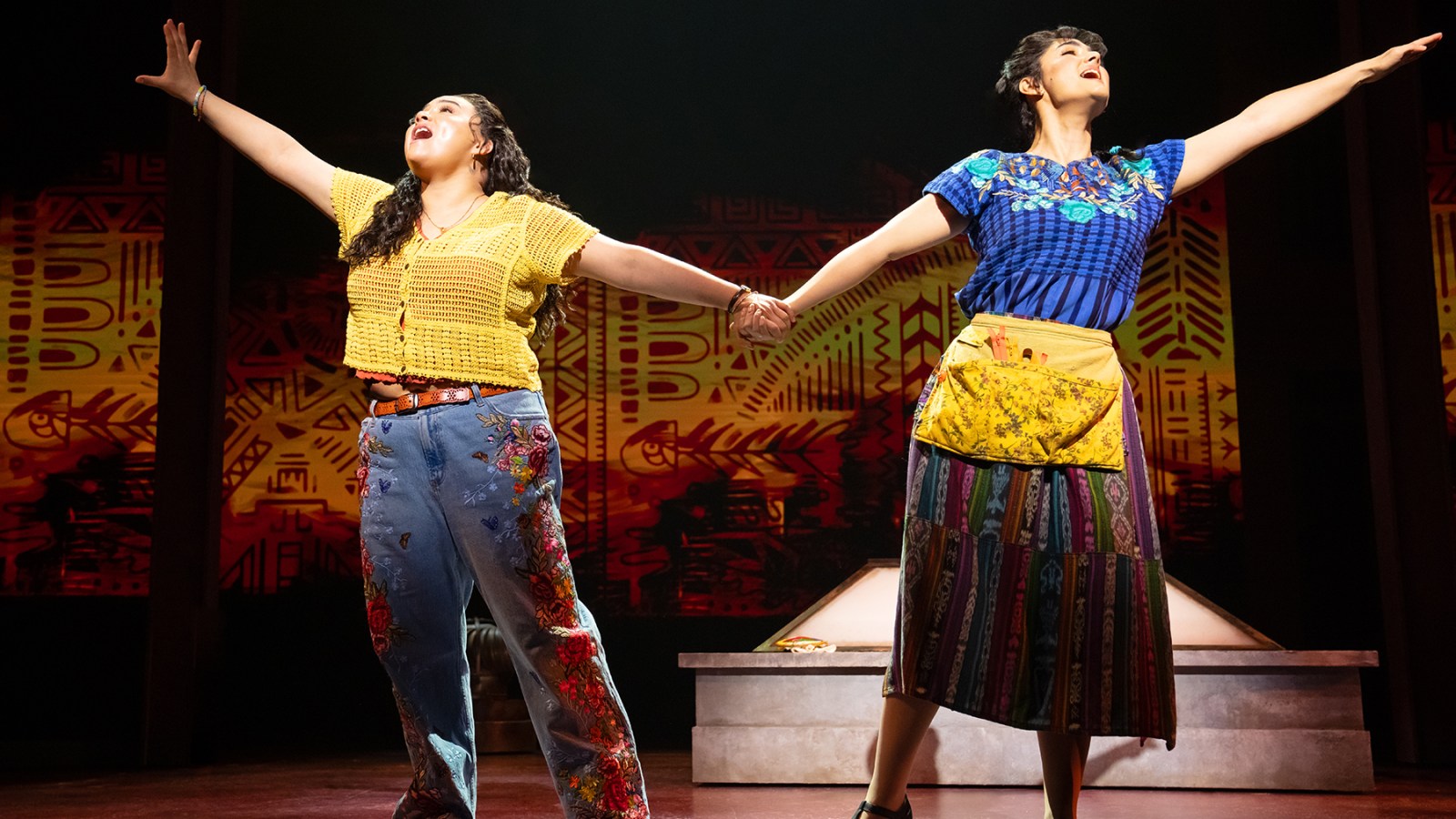The creators behind Real Women Have Curves never imagined their musical, which is set in the Eighties, would hit as hard as it does today. Based on the 2002 film of the same name, the show follows a group of women working at a garment factory as they navigate issues of body positivity and, most poignantly —especially given what’s happening in the country — the realities of being undocumented immigrants.
The powerful story centers on Ana (played by Tatianna Córdoba), a young woman coming of age in East L.A. with dreams of studying journalism at Columbia University. But with her older sister running the family’s garment business, Ana might have to stay behind and put her dreams on hold. Through musical numbers and comedy, the audience gets to know her and the other women at the factory, each with their own ties to the immigrant experience. It’s a beautifully told story, brought to life by an all-Latina cast — but it’s set to close on Broadway on June 29 due to low ticket sales, despite the fact that the story has become even more relevant amid the ICE raids affecting migrants across the country.
Córdoba, who plays the show’s protagonist, tells Rolling Stone that when the show was fully cast at the end of last year, Donald Trump had just been elected and the cast was “a little nervous” to do a show that is so “loudly and proudly Latin. However, everyone in the play fully related to the stories being told through the show. Now, it feels even more important to tell these stories.
Julieta Cervantes
“A lot of theater-goers and the people who have the privilege of seeing theater tend to be of the upper class, tend to be white. So this was a great opportunity for us to sort of let them into our story,” Córdoba says. “We wanted to use joy as resistance in the show. A lot of times, stories about any marginalized community are heavily focused on the struggle and the hardships, which are all there and true. And it’s also important to show how we have a colorful culture within that.”
Director Sergio Trujillo fights back tears as he describes the importance of telling stories that “humanize” the real people affected by outdated and often racially driven immigration laws. He hopes audiences of all backgrounds see the show and “learn about us and who we are.”
“I usually choose to speak through my art, but I can no longer be silent,” says Trujillo. “I am a product of undocumented immigrants. I am a product of someone who came here with nothing other than aspirations to make a better life for myself and our family.”
In one particularly tear-jerking scene in the musical, a nearby factory gets raided by ICE, and the audience gets to watch the women of the garment factory hide in fear as their neighbors get arrested and taken away. The room gets quiet as the women sob and catch their breath while trying to make themselves invisible to the ICE agents.
“It was very important for me that the audience experience what it’s like to be in that room right next to where the raid is happening, to hear the scream of those women, to hear the violence with which these agents attack these women and and sit in silence,” says Trujillo. “I’d like the audience to sit in that moment and feel it.”

Julieta Cervantes
That dark moment is later juxtaposed with a liberating number during the title song, “Real Women Have Curves,” when the women strip off their clothes — because of a failing A/C. The show strikes a balance between smaller, heavy moments and lighthearted fun and a celebration of body positivity. Trujillo says that balance is essential: “Every great comedy has to have depth and emotion. It’s important to tell this story as authentically as it is, and because this is a musical and not political porn, it was figuring out how to create balance through humor and pathos.”
Unlike the film, which starred a young America Ferrera, the play introduces a new character named Itzel (Aline Mayagoitia), a Guatemalan refugee who’s undocumented and facing the harsh reality of criminalized immigration. She delivers one of the show’s standout moments with the song “If I Were a Bird,” where, through humor, she shares just how free she wishes she could be. (The New York Times called it one of the best songs on Broadway this season.)
“The imminent fear of La Migra in our show is not necessarily the villain of the story. It’s just something that’s true and a part of the story, it’s just something that is a real problem for our people,” says Córdoba. “We wanted to use joy as resistance in the show. A lot of times, stories about any marginalized community is heavily focused on the struggle and the hardships, which are all there and true. And it’s also important to show how we have a colorful culture within that.”
It’s especially jarring to realize that a show set in the Eighties — when the original play was written — is still so impactful today. Joy Huerta, one half of the pop duo Jesse & Joy and the show’s musical lead, says keeping the story in that time period was a “deliberate choice.”
“[It] highlights the ways society and the US immigration system has changed and what has remained the same,” Huerta says. “We had no idea when we started working on this project five years ago that when the show made it to Broadway it would be such a literal reflection of what’s happening just miles — and blocks — away from our theater.”
“But that’s exactly what makes representation and visibility so important and why sharing this story with audiences now, feels like a responsibility,” she adds.
Trujillo acknowledges that people often come to the theater to “detach from reality,” but says he hopes that doesn’t stop anyone from seeing a show that tackles real issues. At its core, the musical is “joyful, funny, heartfelt,” while still grounded in truth. Córdoba adds that it’s about telling stories that resonate with everyone — regardless of background.
“What’s happening right now is scary and heartbreaking for our country, but it’s that sliver of hope that gets us through. That’s in our show, too,” says Córdoba. “That hope is never lost and it’s what makes our community so strong.”



